Day 7, June 20, 2014, 30 miles packrafting the Ivishak River.
A 7 day, 170 mile wilderness backpack and packraft trip along the Ribdon, Ivishak and Sagavanirktok rivers in Alaska’s Brooks Range from June 14-20.
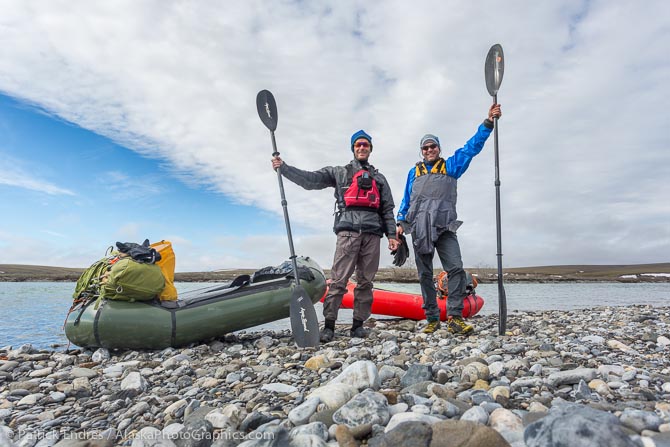
All dry, warm, and ready to jump in the rafts for the last day of the journey.
We woke to no rain and light winds, at least in comparison to the night before. The clouds had lifted, and hints of blue sky made the sun look promising by mid day. The one lingering question in our mind about our final day on the river was if the past two “fast-paced” days on the water would hit the wall when the water slowed down a bit and the potential headwinds of the Arctic Coastal Plains blasted down upon us. There is one things that cyclists and rafters have in common–they hate a head wind, since it can bring things to a halt quickly. As it turned out, our river speeds remained pretty fast as evidenced by the GPS, and we were making good time, but were paddling hard.
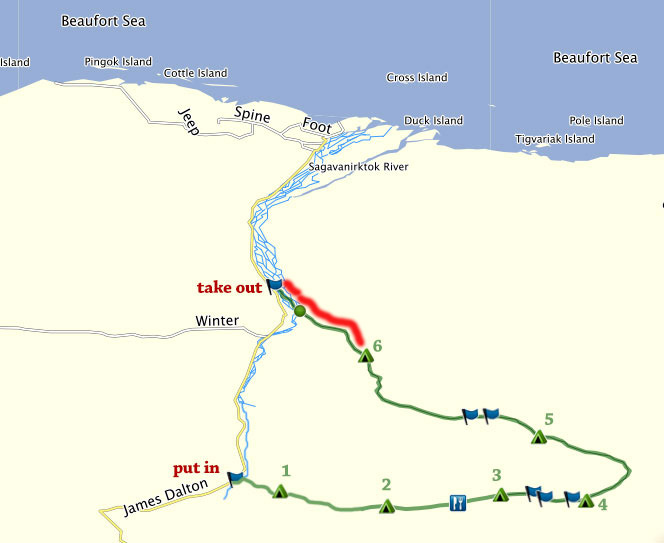
Day 7: Route Map – Final leg of the Ivishak River, and the last few miles on the Sagavanirktok River. Then a beer and chips!
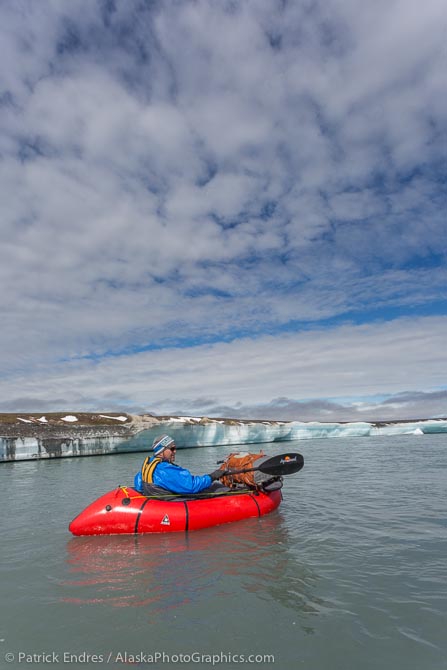
Some beautiful aufeis lined the river banks as we made it closer to the confluence of the Ivishak and Sagavanirktok Rivers.
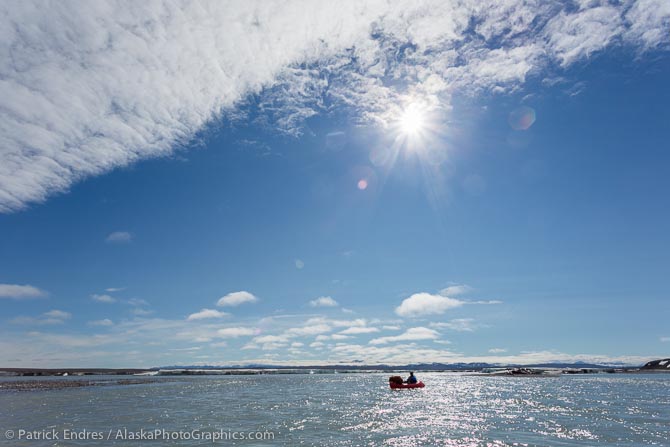
Mark basks in the sun on the river, the first splash of sunshine on the entire water portion of the journey.
There were beautiful sections of aufeis in this lower section of the Ivishak river. While aufeis can be dangerous if it pinches off the river and restricts travel, these areas of ice were broad and posed no threat at all. Actually, there was never a time on the entire river that aufeis posed any problem at all.
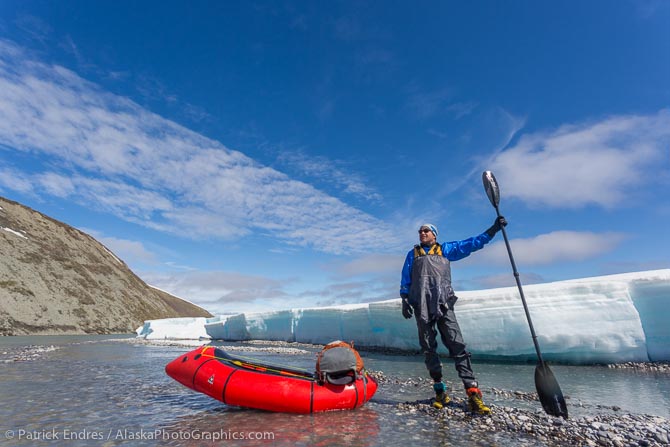
I loved the bright red color of that raft!
I would be remiss if I did not carry on by mentioning the next rule in The Laws of Simplicity by John Maeda. The 5th law is “Context”. Because “what lies in the periphery of simplicity is definitely not peripheral.” While on an initial read, it might not seem apparent what this has to do with simplicity, it can be understood in this illustration. Consider the effectiveness of a simple add of just a few lines of text on an otherwise blank white piece of paper. “The opportunity lost by increasing the amount of blank space is gained back with enhanced attention on what remains…when there is less, we appreciate everything much more”. For me, this little journey is a good reminder about context. There is always a task at hand that requires diligent attention, but when traveling in the backcountry, one should be well aware of what is also happening in the periphery. Reading the flow of the river requires the proper attention to the challenge directly before you, but it also requires awareness of what is happening down the way as well. The important foreground should not obliterate the also important background. Excellence produced by a diligent focus that achieves your goal, should not totally sacrifice the information that lies just outside that focus point. Watching the ground closely so you don’t twist your ankle on a rock is important, but scanning the horizon for signs of bears is also important. In the wilderness, the foreground needs its correct contextual relationship with the background.
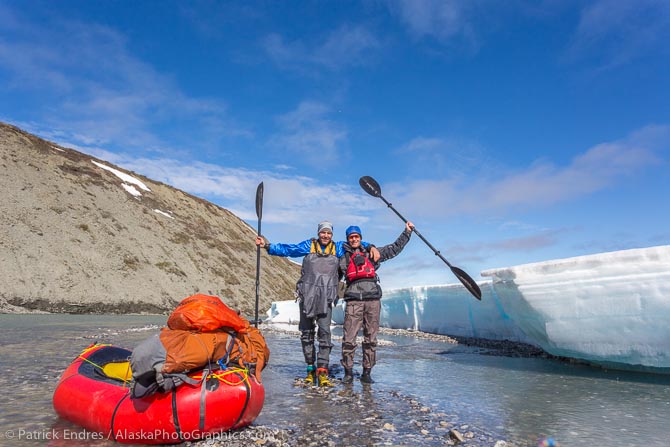
Paused for a water break along the aufeis.
We continued down the river, making good time, and awaiting the confluence of the Sagavanirktok river, with which we would merge and travel about eight miles north along the Dalton Highway to the location where we left the car. The Sag is a broadly braided river, and shortly after the confluence, we stuck to the left side of the river to make sure we ended up with easy access to our vehicle. The winds cranked up considerably as we paddled on the Sag, with some pretty robust gusts, but we still kept a pretty good speed.
Soon, the shine of the vehicle was in view and we were jazzed to reach it. When we reached the shore, I was almost giddy at the fact that the demobilization process takes just a few minutes. We deflated the rafts quickly, rolled them up, put them in the backpack and walked to the car. This is in stark contrast to my raft trip down the grand canyon that required hours and hours of demobilization. And although there are 5 more rules to get through in Maeda’s book, this single demobilization effort is the paragon of simplicity! You will have to get his book to read the next five.
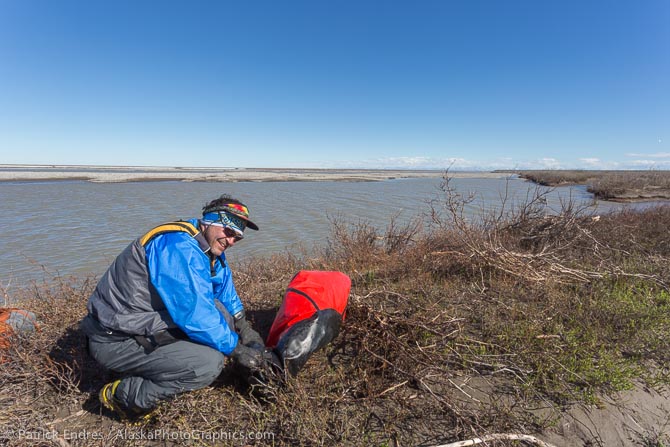
Mark deflates and rolls up his raft. An amazing demobilization process that takes about 5 minutes! We then had a few hundred yard walk to the car with our packs on.
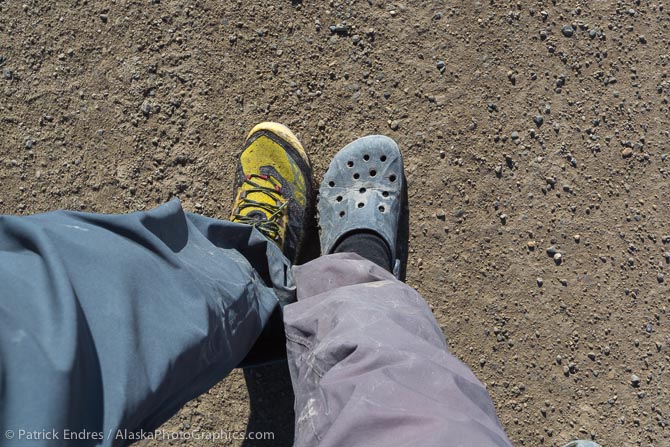
The after shot of the shoes. I had planned a before and after shot of our shoes since I was not sure how they would hold up. But, my trail shoes had been stuffed in my backpack. Both of our shoes held up great.
The sun was shining, and it was a magnificent day to finalize this wonderful journey. We walked to the car, got out of our wet gear and hopped in. When driving down the highway, it felt almost immoral to be going so fast. I can’t wait to do a similar trip again.
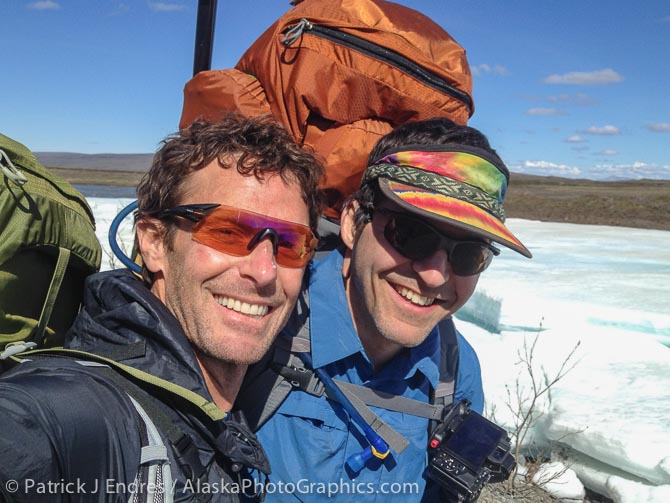
Start of the trip selfie
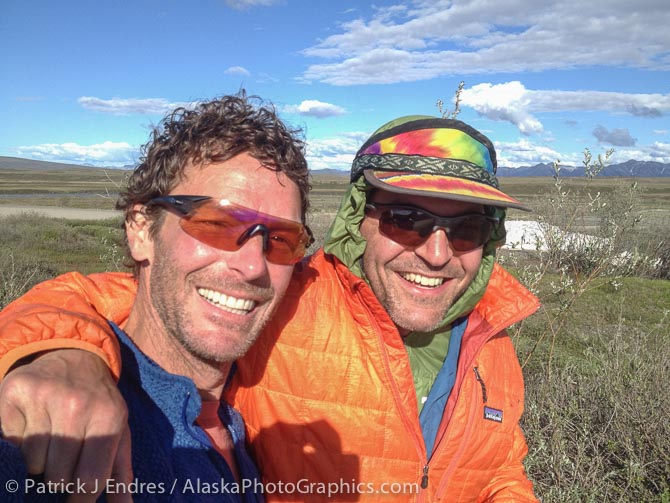
End of the trip selfie. A little more grizzly, but it looks like we are tiny bit happier than when we started, but a barely measurable tiny bit indeed.







